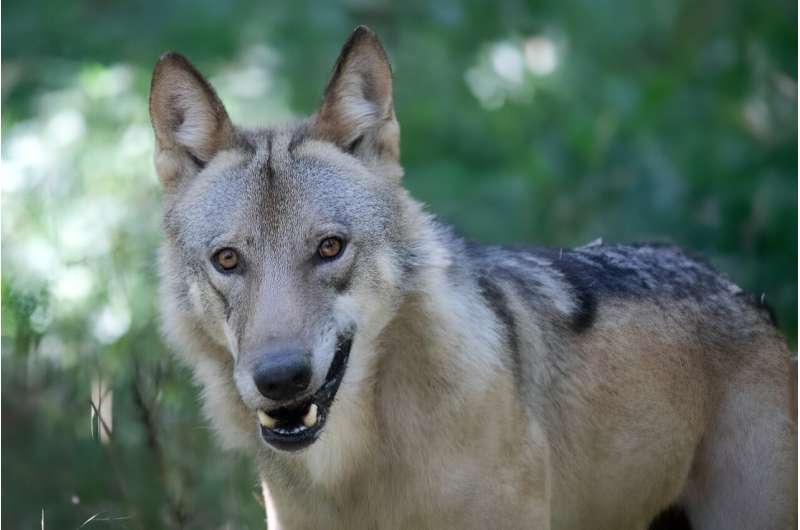This article has been reviewed according to Science X's editorial process and policies. Editors have highlighted the following attributes while ensuring the content's credibility:
fact-checked
reputable news agency
proofread
As wolves swoop, Austrians grab guns for contested cull

After wolves swooped from the forest and savaged her lambs, Austrian sheep farmer Renate Pilz feels like giving up. Others, to the anger of conservationists, are reaching for their rifles.
"I lost two ewes and two lambs" to the wolf attack last year, the 55-year-old said at her farm in the village of Arbesbach.
She showed AFP photos of her animals, bleeding and so badly bitten that they had to be put down.
"It's too much work, it's no longer profitable and, above all, I don't want to do it any more," she said.
After disappearing in the 19th century, wolves have gradually returned to Austria in recent years. The number rose to 104 this year, up from an estimated 80 in 2022.
In response to a reported increase in attacks on livestock, several Austrian regions have authorized the controversial killing of wolves.
Environmental groups say the move violates European law, which lists them as protected animals.
Swelling wolf populations have dominated the headlines in the Alpine country and stirred emotion across Europe, with breeding packs recorded in 23 countries of the European Union.
'Wolf-free' zones
A few kilometers from Arbesbach, Gerhard Fallent told AFP that three wolves had killed "half of his flock of sheep" and seriously injured the other half last year.

Fallent has since become a vocal proponent of regulating the wolf population, founding the association Wolf Stop.
He has called for "wolf-free" zones to be established near communities where people live and work.
After a wolf was sighted close to a bus stop frequented by children, school trips were cancelled and pupils picked up directly from home by the bus for a year, the 64-year-old lamented.
"We want our children to be able to go back to playing in the woods" in a region that can offer much to tourists too, said Fallent.
With family farms going out of business, he noted that several Austrian regions managed to significantly reduce the number of attacks after authorizing killings.
'Obsolete' protection status
In Austria's southern state of Carinthia, shooting wolves to protect local farms and their livestock has been authorized since 2022.
So far "we have killed 13 wolves," deputy governor Martin Gruber told AFP.

Putting up barriers such as fences in the rugged terrain, he argued, was "impossible" and above all a "waste of public money".
With the total population of wolves in the EU estimated at 20,300, Gruber said the predator's protection status was "obsolete" and should be lowered.
In 2023, European Commission President Ursula von der Leyen called for the downgrading of the wolf's conservation status from "strictly protected" to "protected" in view of the "real danger" posed by the packs.
But conservationists across Europe have been up in arms, with environmental groups in Austria challenging the authorized killings in court.
In July, the European Court of Justice (ECJ) ruled that Austria should first try other solutions before hunting wolves massively, noting the local wolf population was "not at a favorable conservation status" and siding with the conservationists.
Fairy tales
Situated in the heart of Europe, Austria is rare in having three isolated wolf populations converge there from other parts of the continent.
After surviving "heavy hunting" about a century ago, wolves have started to spread due to being protected, and separate groups are linking up, said Marianne Heberlein, director of the Wolf Science Center.

The operation, which claims to be the only one of its kind in the world, is attached to Vienna's University of Veterinary Medicine.
It researches the process of domestication by comparing the behavior of the 10 wolves and 13 dogs housed at the center.
It also aims to increase the public's awareness of wolves by familiarizing people with the "wild animal" in a "neutral" way, said Heberlein.
The center aims to do so "without glossing over the danger" they can pose or "giving them a bad image", she said.
The fear of the wolf "goes back a very long way in history", she said—the age-old conflict between wolf and human has fed into the fairy tales told to children.
© 2024 AFP




















